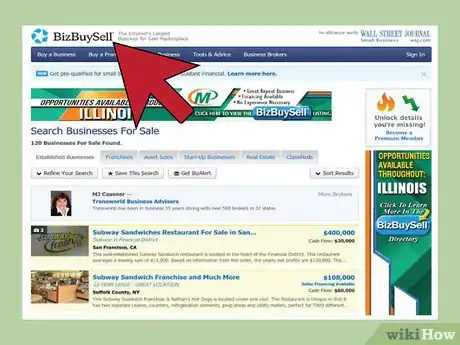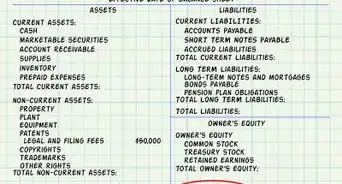This article was co-authored by Michael R. Lewis. Michael R. Lewis is a retired corporate executive, entrepreneur, and investment advisor in Texas. He has over 40 years of experience in business and finance, including as a Vice President for Blue Cross Blue Shield of Texas. He has a BBA in Industrial Management from the University of Texas at Austin.
wikiHow marks an article as reader-approved once it receives enough positive feedback. In this case, 91% of readers who voted found the article helpful, earning it our reader-approved status.
This article has been viewed 97,234 times.
If you're running a cash-strapped startup, you might find that it makes financial sense to reward sweat equity—or non-monetary contributions to your company—with stock instead of cash. After all, you want to recognize the time, labor, and mental effort that others have put into helping get your company off the ground. Trading sweat equity for stock is a taxable transaction though, so it needs to be well-documented. We'll help you understand how to record that sweat equity on your balance sheet to keep your books in order.
Steps
Determining How Much Sweat Equity Is Worth
-
1Calculate the value of the business. Before you can determine the value of any sweat equity, you'll first need to determine the value of the business. That's because you'll effectively be compensating somebody with "part" of the business. You need to know how big or small a part of the business the person should receive in exchange for services rendered.
- One way to calculate the value of a new business is by simply looking at the startup capital that's been put into it. For example, if you put $250,000 into a startup, then the business is worth $250,000.
- Use comparables to determine the worth of your company. Check out how much companies like yours are selling for on sites like BizBuySell[1] and BizQuest.[2] Your company should be worth about as much as others in the same space and region.
- Use discounted cash flow to determine the worth of your business. If your business is already earning revenue, you can use a discounted cash flow model to calculate its worth. That's where you value your business based on future cash flows.[3]
- Value your business based on a multiple of current cash flows. For example, if your business has a cash flow of $50,000 per year, simply multiply it with a valuation figure to determine the value. You might multiply it by two or as much as five, depending on the nature of your business and the growth potential.[4] Once again, check out how similar businesses are being valued to determine the multiplier that's best for your business.
- Use a combination of the above mentioned methods and take an average. There's no reason you need to isolate yourself to one method when valuing your business. Use a variety of methods and take an average to get a solid valuation for your business.
-
2Determine the value of each share of stock. If you're business is a corporation, you'll need to know the value of each share of stock so that you can properly pay the person performing the sweat equity the appropriate number of shares. For example, if your company is worth $500,000 and it has issued 100,000 shares of stock, then each share is worth $5.
- For partnerships and LLCs, you'll be using be using percentages instead of shares of stock. For example, you'll "pay" the person performing the sweat equity 10% of the company instead of 10,000 shares of stock.
Advertisement -
3Calculate the value of the sweat equity performed. You'll want to pay a fair market value for the type of work performed. In this case, though, you'll do that with a piece of your company instead of cash.
- Use the "foregone alternative" method to determine the value of the equity. In other words, what could the person have earned if he or she had done the exact same work for another company? That's the value of the sweat equity earned.
- How much did the sweat equity contribute to the value of the business? It may be the case that the sweat equity contributed much more in value to the business than the actual cost of labor. For example, if you paint a house, you could earn $2,000 for the work. This would be the market value of your work.
- However, you might add $3,000 to the value of the house by painting it. This represents the value added to the house based on the addition of your labor.
- Both of these numbers are estimates, so actual amount of sweat equity may be in the range between the two.
-
4Pay the person who performed the sweat equity. Once you've determined the value of your company and the value of the work performed, pay the person who performed the sweat equity. For example, if you value the work performed at $50,000 and your share price is $5, then pay the person who performed the work 10,000 shares of stock.
- If your business is a partnership or an LLC, then the person who performed the sweat equity will effectively buy a percentage of the business with the sweat equity as opposed to cash.
- Keep in mind that once you pay a person in stock for work performed, you can't take the shares back if the person stops working or doesn't do a good job. In other words, once you give somebody 10,000 shares, you can't take them back. That's why some people pay sweat equity partners an effective hourly rate in shares. The more the person works, the more equity he or she earns.[5]
- Payment for sweat equity in stock shares is a taxable transaction for corporations.
Accounting for Sweat Equity in a Corporation
-
1Determine the par value of your stock. The par value of the stock is the value of the stock as determined in the corporate charter.[6] You'll need this information to properly account for sweat equity.
- In most cases, stock shares will have a very low par value, perhaps $1 or 1 cent per share. Other times, the par value can even be zero.[7]
-
2Calculate the value of the sweat equity beyond the par value of the stock. For example, If you're paying the person who did the work 10,000 shares at $5 per share, but your par value is $1 per share, then the value of the sweat equity beyond the par value is $50,000 (10,000 shares x $5 per share) - $10,000 (10,000 shares x $1 per share) or $40,000.
-
3Debit expenses for the entire value of the sweat equity. If the person performed the work for $50,000 in stock, then you'll debit expenses for $50,000.
- You might use one expense account (e.g., professional services) or break the expenses out into multiple expense accounts (e.g., contract work, maintenance, IT services). That's at your discretion, but the total debit value should add up the value of the sweat equity.
-
4Credit the appropriate capital accounts. You've just debited your expenses for $50,000, so you need to make some credits to keep your books in balance.
- Credit common stock for the value of the stock based on its par value. For example, if you paid someone $50,000 in stock with a par value of $10,000, then credit your common stock amount $10,000.
- Credit paid-in capital for the difference between the value of the sweat equity and the stock's par value. This is the same number you derived from Step #2 above. For the example that we've been using, that number is $40,000.
- If there is no difference between your stock's par value and its current value, you don't need to make any adjustments to the paid-in capital account.
Accounting for Sweat Equity in a Partnership of LLC
-
1Debit the appropriate expense accounts. As with a corporation, you'll debit your expense accounts to have some record of the work done in exchange for the equity. For example, if John Smith is the one who performed the sweat equity and you determined that it was worth $50,000, then you'll debit expenses for the amount of $50,000.
- You might use one expense account (e.g., professional services) or break the expenses out into multiple expense accounts (e.g., contract work, maintenance, IT services). That's at your discretion, but the total debit value should add up the value of the sweat equity.
-
2Create the new capital account. It's likely that the person doing the sweat equity doesn't have a capital account yet. For many partnerships and LLCs, there are capital accounts identified by the person's name (e.g., "John Smith - Capital"). Create that account for the person performing the sweat equity if it doesn't exist.
-
3Credit the appropriate capital account. Now, you're going to balance out the expenses you debited before by crediting the capital account of the person who performed the work. To continue with the example, you'll credit the "John Smith - Capital" account for $50,000.
Warnings
- You might need to account for the sweat equity as a capital expenditure as opposed to an expense. Consult a tax adviser about that.⧼thumbs_response⧽
- People who are "paid" in sweat equity will need to pay income taxes on the value of the equity that they received.⧼thumbs_response⧽
References
- ↑ http://www.bizbuysell.com/
- ↑ http://www.bizquest.com/
- ↑ http://www.investopedia.com/university/dcf/
- ↑ http://fitsmallbusiness.com/how-to-value-a-business/
- ↑ http://info.legalzoom.com/sweat-equity-s-corporation-24971.html
- ↑ http://www.investopedia.com/terms/p/parvalue.asp
- ↑ http://www.investopedia.com/terms/p/parvalue.asp








































































